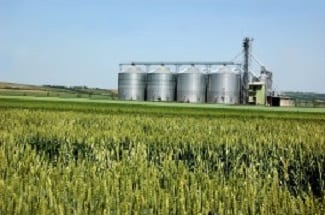Ontario Challenges Agri-Food Industry to Add 120,000 Jobs by 2020

Ontario’s agri-food industry is one of the country’s fastest growing and highest performing sectors. In 2014, Ontario food and beverage processors accounted for 41% for the country’s processed food and beverage products. The industry continues to grow, and in doing so, has increased provincial gross domestic product (GDP), exports, and job creation in recent years. Ontario’s dominance in the agri-food industry has not been merely by accident, but rather the cumulative effect of innovative business initiatives, infrastructure, and government support.
Government of Ontario Identifies Potential for Agri-Food Industry Employment
In 2013, Ontario Premier Kathleen Wynne challenged the province’s agri-food industry to become more competitive in a number of key performance indicators (KPIs). In The Premier’s Agri-Food Challenge: Building on Success, Wynne called for the addition of 120,000 new jobs by 2020. Wynne also challenged the industry to become among the top-five places to manufacture food and beverages in North America, in addition to doubling the amount of revenue earned from food exports.
Wynne called for the addition of 120,000 new jobs by 2020.
Since the challenge was made, Ontario’s agri-food industry has grown considerably and appears to be on track to meet the 2020 goals. Over 781,600 Ontarians are employed within the agri-food industry, including farmers and agri-food businesses (increase in over 40,000 since 2013). The industry currently represents a $35.1 billion annual market for Ontario (increase of $1.1 billion since 2013), while exports have grown to $12.5 billion annually (increase of $1.7 billion since 2013) (Government of Ontario).
Related Blog: The State of Canada’s Agriculture and Agri-Food Industry in 2015 – Canada’s agriculture and agri-food industry is experiencing sustained annual growth in several key performance indicators. View industry data and find Canadian government funding programs for your agriculture or agri-food business.
Agri-Food Summit Advisory Group: Industry Growth Recommendations
One year after Wynne created the Agri-Food Challenge, the Ontario Ministry of Agriculture, Food and Rural Affairs (OMAFRA) created an Agri-Food Growth Steering Committee to advise the Government of Ontario how they should help achieve these goals. In 2015, the Steering Committee released eight recommendations for the Ontario government, which included:
- Create performance databases to help the agri-food sector measure how they’re doing compared to competitors. These measurements can spur innovation and encourage investments throughout the value chain.
- Identify Ontario food processing capacity as a priority for federal and provincial agricultural funding programs.
- Promote, domestically and internationally, the advantages of Ontario’s agri-food sector, including fresh water, transportation, warehousing, and a reliable supply chain.
- Promote Canada’s reputation for quality and safety in the agri-food industry to other nations.
- Expand markets abroad; last spring Ontario’s agri-food trade mission to China led to $9 million in new business deals.
- Reduce regulatory burdens and red tape keeping the agri-food industry from growing.
- Enhance collaboration between industry, academia, and the ministry.
- Provide Ontario government funding programs to small and mid-sized businesses making strategic investments.
The Ontario and Canadian governments have been addressing these recommendations since receiving them earlier in 2015. Over the coming years, both levels of government will invest in the industry and make it easier for businesses to grow and prosper.
Ontario Government Grants for the Agri-Food Industry
Agri-food businesses planning to leverage government funding have a variety of options to assist them. Ontario government funding programs such as Growing Forward 2 (GF2) Ontario, and the Canada-Ontario Job Grant will assist employers to grow and respond to increased market demand.
Growing Forward 2 (GF2) Ontario government funding aims to finance projects that can be categorized into six industry focus areas, including productivity enhancements, market development, and business development. Eligible food processors and producers can receive up to 35-50% of project expenses (to a maximum lifetime amount of $350,000) to become more competitive and expand their business.
The Rural Economic Development (RED) Fund was created to support the local supply chain in rural Ontario regions with populations of less than 100,000. The program will provide grants for projects that strengthen the local supply chain and focus on innovation, covering up to 20% of for-profit business expenses to a maximum of $1 million and up to 50% of eligible expenses for community and non-profit projects.
The Canada-Ontario Job Grant (COJG) provides Ontario small business grants that reduce the cost of third-party training for company employees. Businesses can receive up to 66% of eligible training costs, including course fees, textbooks, trainer costs, and software. COJG enables businesses to train their workforce, and in doing so, helps them to become more skilled.
Attend a Free Government Funding Webinar: Agri-food businesses can register for a government grants and loans webinar. Discover funding opportunities for agri-business, hiring and training, manufacturing, and exporting.
